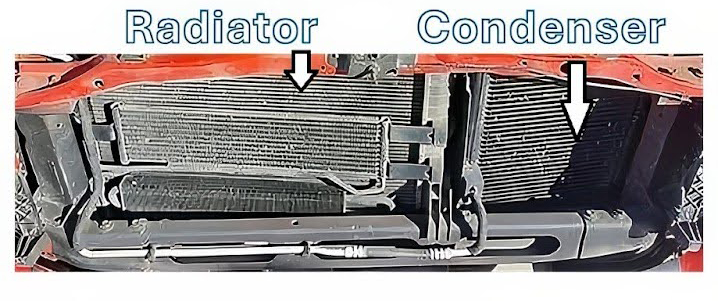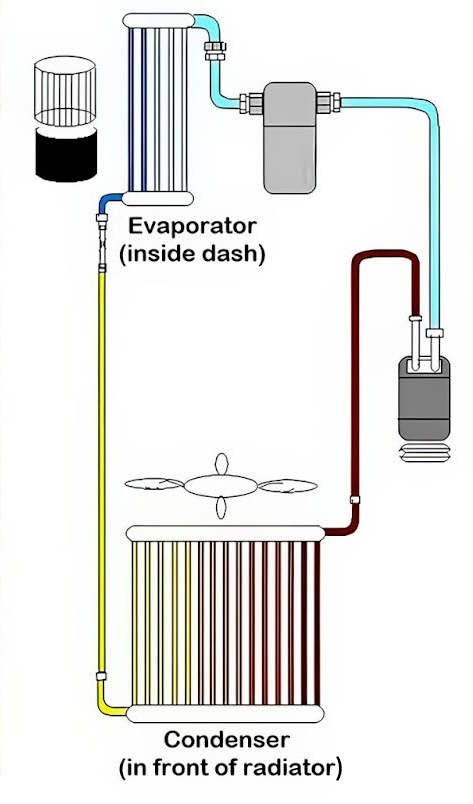What Does the A/C Condenser of a Car Look Like?
A: How an A/C condenser looks depends on its type, though all are equipped with tubes that conduct refrigerant. There are four condenser types: tube and fin condensers, serpentine condensers, parallel flow condensers, and multi-flow condensers.




Tube and Fin Condensers
Tube and fin condensers conduct refrigerant through tubes that are connected to fins, which are used to dissipate the heat.
Though tube and fin condensers are inexpensive and easy to replace, they’re arguably less efficient than other condenser types. They might not be able to provide optimal cooling in hot weather.
Serpentine Condensers
An alternative to tube and fin condensers, serpentine condensers consist of a single serpentine tube that’s coiled to maximize surface area.
They’re popular in modern vehicles and provide good cooling in hot weather. Though they’re durable and less likely to leak, they’re also more expensive and aren’t compatible with all vehicle types.
Parallel Flow Condensers
The most compact and lightweight of the condensers, parallel flow condensers consist of multiple tubes running parallel to one another. This allows the tubes to transfer heat efficiently. However, their complexity makes them costly.
Multi-Flow Condensers
Multi-flow condensers combine serpentine condensers and parallel flow condensers, consisting of multiple coiled tubes running parallel to one another.
These condensers provide excellent cooling efficiency and work well in large vehicles because they take up lots of space. They are, unsurprisingly, the most expensive condenser types and only work with certain vehicles.

What Makes the A/C Condenser Important?
The A/C condenser helps cool the inside of your car. It accomplishes this by transferring heat from hot, compressed refrigerant gas through coils and fins, cooling the refrigerant gas until it becomes a liquid. This liquid then enters the evaporator where it absorbs heat from the cabin air, heating it and repeating the cycle.
Any information provided on this Website is for informational purposes only and is not intended to replace consultation with a professional mechanic. The accuracy and timeliness of the information may change from the time of publication.
































